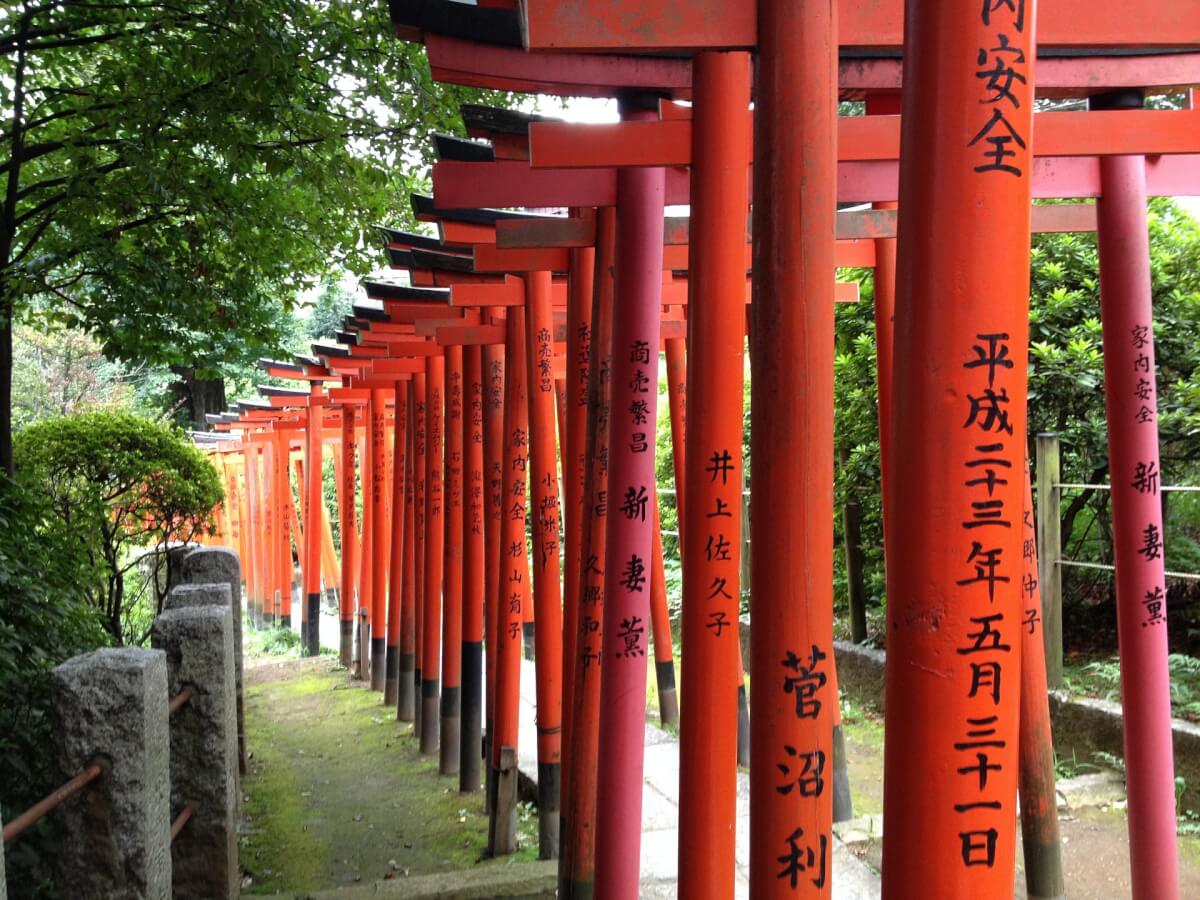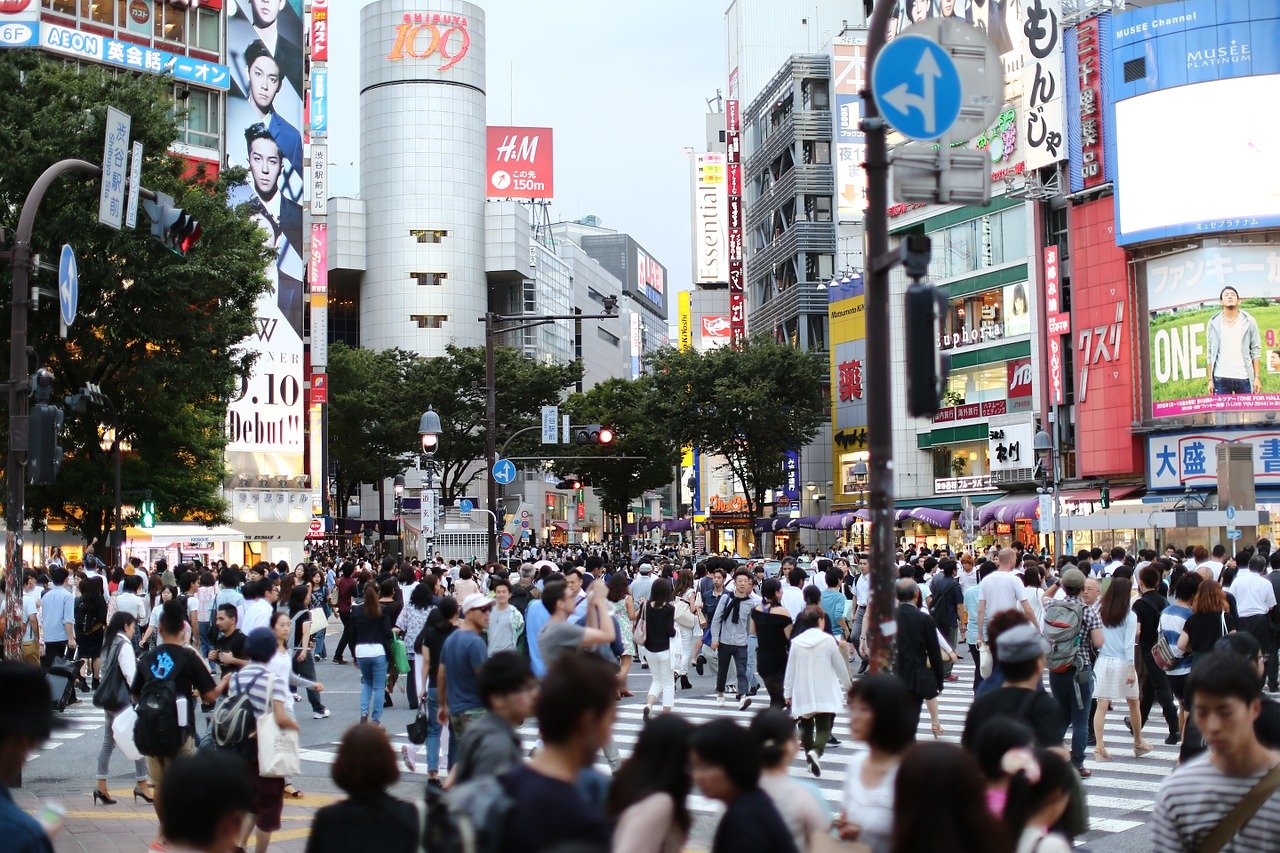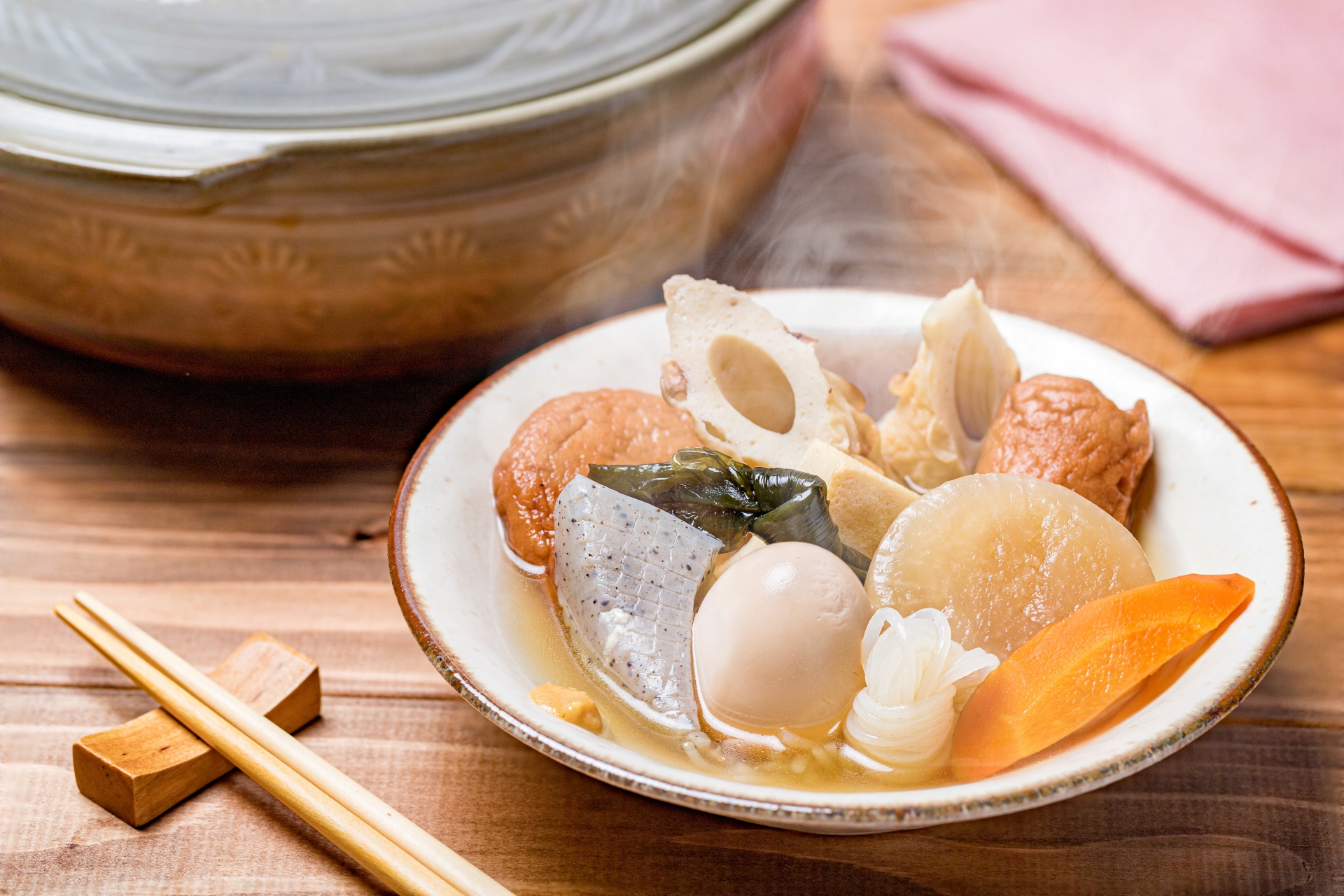Sensoji (浅草寺) is widely known as one of the most popular tourist attraction in Tokyo. The symbolic temple has over 1,300 years of history, which makes it the oldest Buddhist temple in the Tokyo area. It is definitely a must-visit once you go to Asakusa area which attracts crowds with other famous tourist spots around. It attracts people not only from around Japan but also from overseas who are interested in Japanese history and culture. The temple also features several historical structures such as Kaminarimon, the iconic gate standing in front of the approach leading to the main shrine. Many tourists also stop by at the five-story pagoda to take some iconic pictures of it along with Tokyo Skytree that can be seen in the background. Here is the ultimate guide to Sensoji that helps you get to know the history and highlights of the temple prior to your trip!
Get yourself wrapped up in a Kimono and enjoy Asakusa like no one else!
Book your kimono rental for here!
Brief History of Sensoji
The establishment of Sensoji dates back in 628, when two fishermen accidentally founded a statue of Buddha caught in a fishing net in the Sumida river. They returned it to the river and tried to continue fishing in different places, but ended up catching the same statue. They took it back to the village headman, who realized that the statue was Avalokitesvara Bodhisattva (Sho Kanzeon Bosatsu), and decided to dedicate the rest of his life to worship the statue by remodeling his house into a temple in 645.
During the Edo period (1603-1868), it received tremendous support from the Tokugawa Shogunate because it was chosen as a place for prayers of the Shogunate. As the Asakusa area was experiencing rapid development, the popularity of the temple increased among citizens as a center of entertainment and local community as well.
Although the original temple was destroyed by fire during WWⅡ, we can still enjoy the reconstructed buildings making up the sacred temple ground.

Key Highlights
- Oldest Buddhist temple in Tokyo
- Has a long history dating back about 1,400 years
- Visited & supported by the Tokugawa family during the Edo period
- Loved by many people as a symbolic spot in Asakusa area over centuries

What is Kaminarimon?
Kaminarimon (雷門) is an iconic gate standing the entrance of the temple ground. It is always packed with tourists and students on school trips to take pictures with it. The symbolic gate is believed to be built in 942 by a military commander Taira no Kinmasa(平公雅). It has been restored several times over centuries from the fire, and the current one was completed in 1960 due to the donation of Matsushita Konosuke, the founder of Panasonic known as the largest Japanese consumer electronics company.

Big Lantern
The huge lantern is 3.9 meters tall and 3.3 meters wide which weighs approximately 700kg. It is said that it was originally dedicated by craftsmen who were involved in repairing the roof of the Kaminarimon gate around 1800. The current one was also made thanks to a donation by Matsushita Konosuke in 1960. The structure of the lantern is made of bamboo, which is covered with Washi (和紙), traditional Japanese paper. It has been replaced with a new one every ten years to prevent deterioration.

Fujin & Raijin & Ryujin
Two statues are known as Fujin & Raijin(風神雷神), which symbolize the God of wind and thunder. You can find them placed peacefully on both sides of the Kaminarimon Gate. And on the other side in the back of the gate, you can spot 2 different statues as well. It is called Ryujin, the God of water.
These statues were built to protect the temple from fire, thunder, strong wind and flood damage.
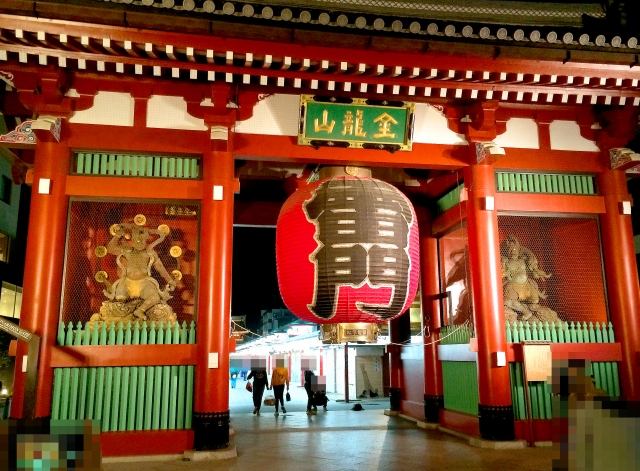
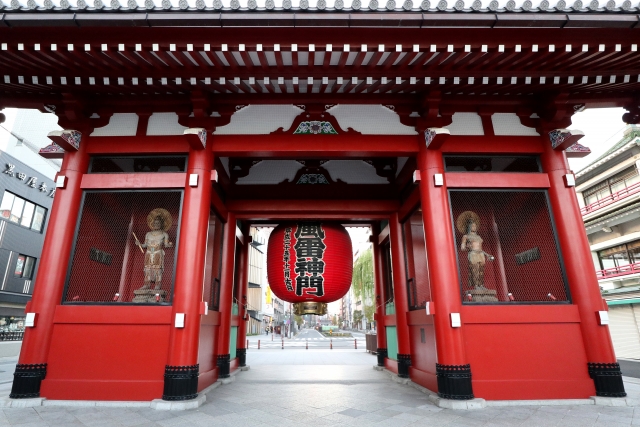
Nakamise Street
Once you walk through the Kaminarimon, you take the first step into the Nakamise Street (仲見世通り). It is a lively shopping street packed with about 90 vendors and small shops along the main approach to the temple. The 250 meters shopping street is recognized as one of the oldest shopping streets in Japan which was started by locals who were granted privileges by the Tokugawa Shogunate to open their own shops during the mid-15th century. It offers you a great opportunity to try local food and find memorable gifts to bring back to your home!
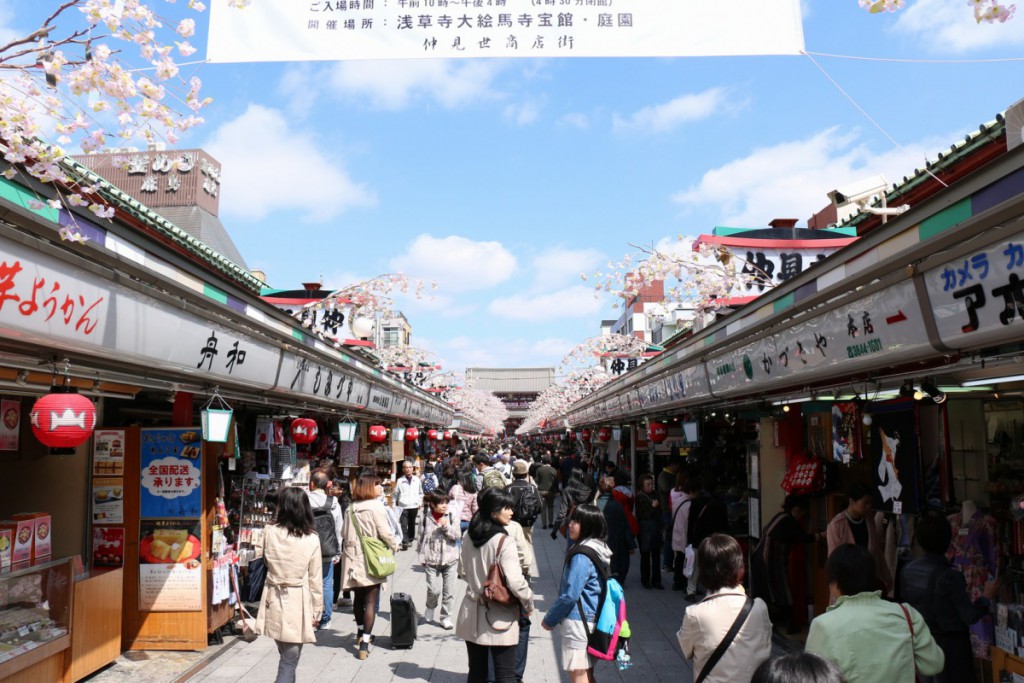
Key Highlights
- Explore one of the oldest shopping street in Japan
- Try Japanese sweets & local food while walking around
- Immerse yourself in the vibrant atmosphere created by local community
Seasonal Events at Sensoji
Sensoji holds a range of seasonal events that fascinates visitors all year round. Here are our recommendations ranging from traditional festivals to modern events!
Spring
Hana Matsuri/ Flower Festival (April 4)
Celebrate Buddha’s birthday with colorful flowers and sweet tea made from hydrangea.
Cherry Blossom Season (late March – early April)
Admire the beautiful cherry blossoms brightly lit up at night!
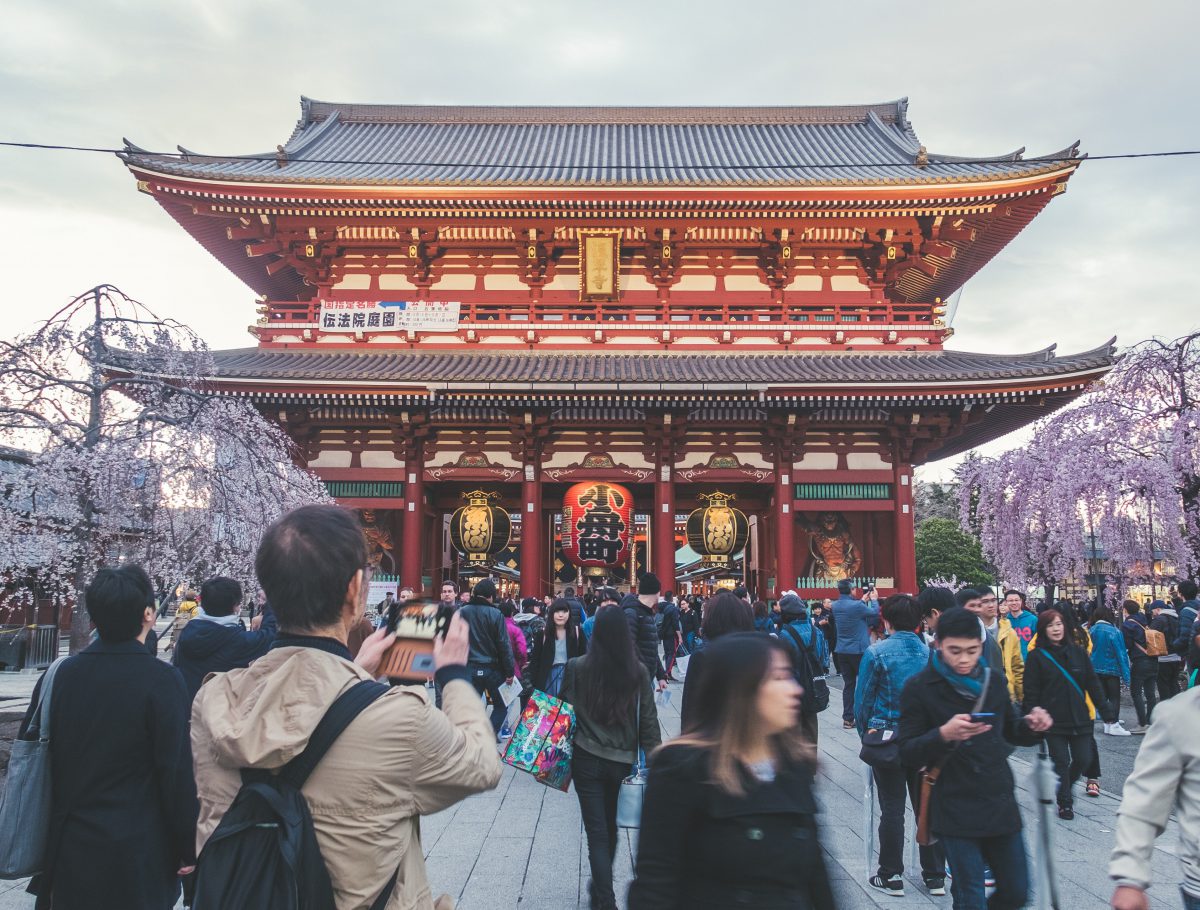
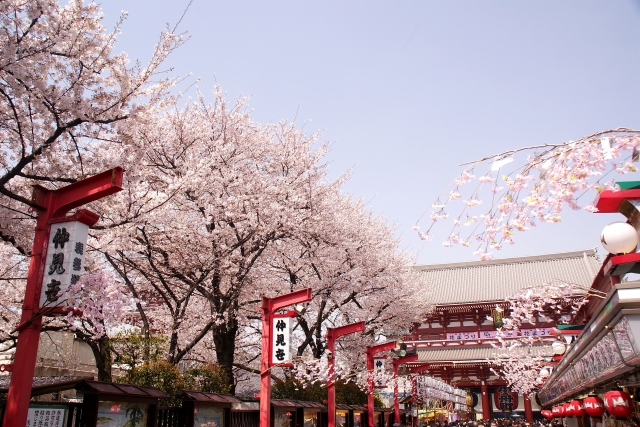
Summer
Shiman Rokusen Nichi (July 9-10)
Explore the Hoozuki Market (ほおずき市) where potted Hoozuki (lantern plant) are sold along with wind chimes which bring us the feeling of summer!
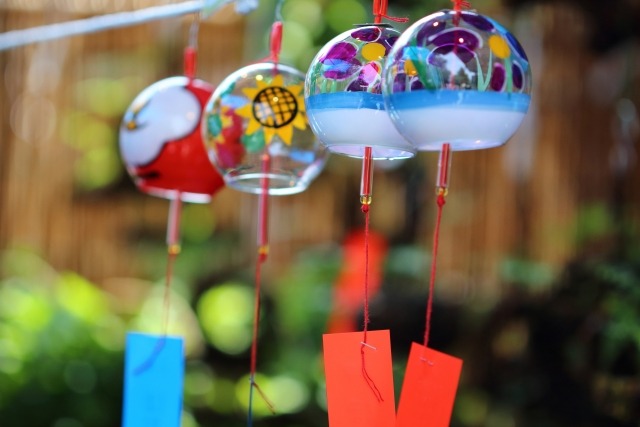
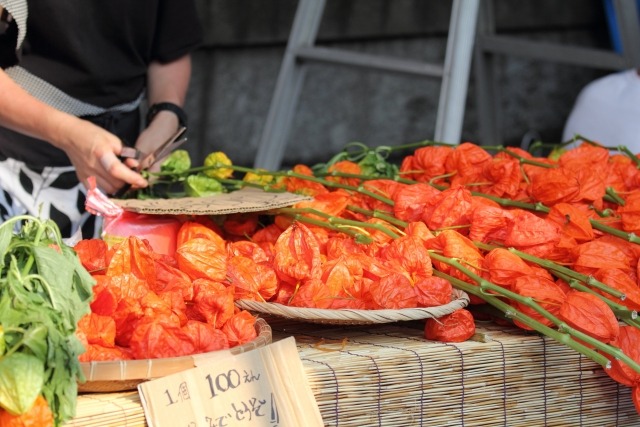
Summer festivals around the area
In the end of July, there is a big fireworks festival along Sumida River. And Sensoji also got some festive mood around that time. Another big festival is Sanja Matsuri which is held in May in Asakusa Shrine. It’s one of the wildest and biggest festivals in Japan.
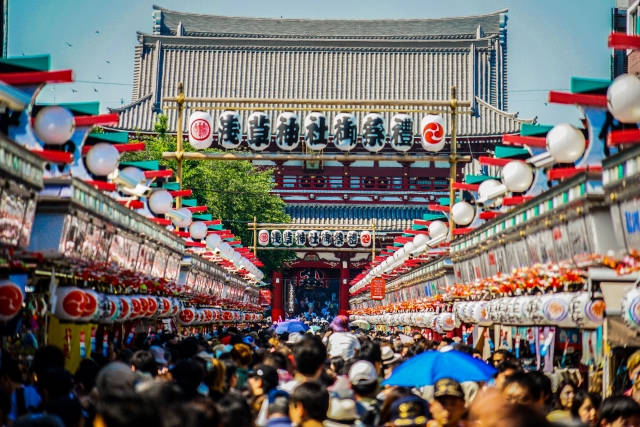
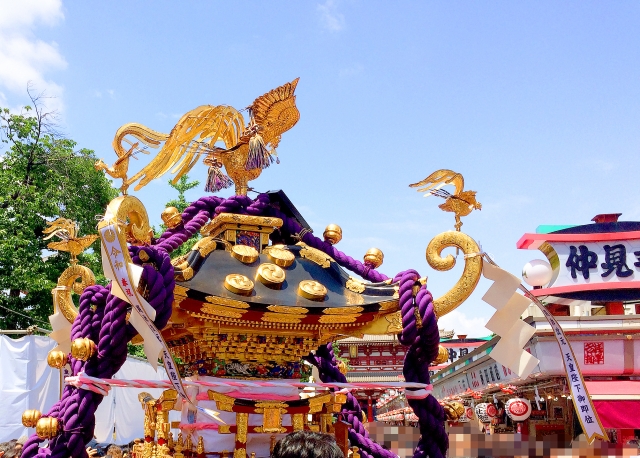
Fall
Autumn Leaves (mid-November – late November)
Enjoy the stunning autumn colors brightly decorating the historic buildings!
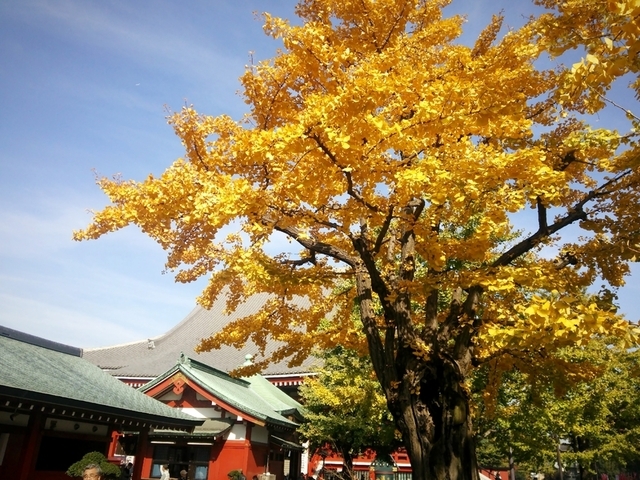
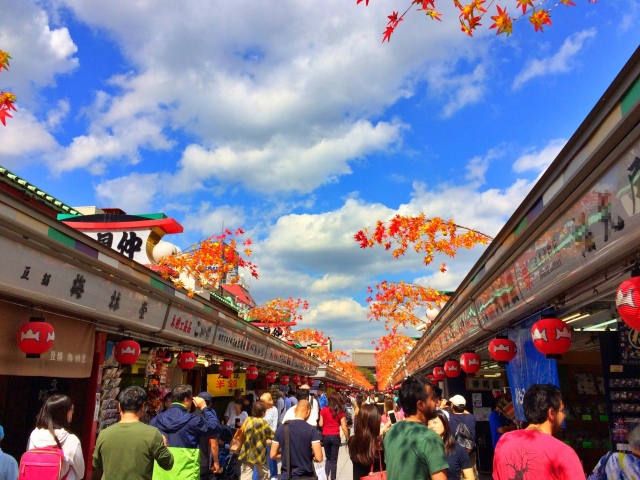
Winter
Osame-no-Kannon Goennichi (Dec. 17 -19)
Get Hagoita (battledores) as a good luck charm that brings you a great fortune!
New Year’s Holiday
Experience Hatsumoude (初詣) at one of the most popular temples that attracts almost 3 million people during the first three days on the year. Don’t forget to try Omikuji, a fortune-telling slip that tells your fortune for the year!
※Hatsumoude: first temple/shrine visit of the year; Learn more about Hatsumode
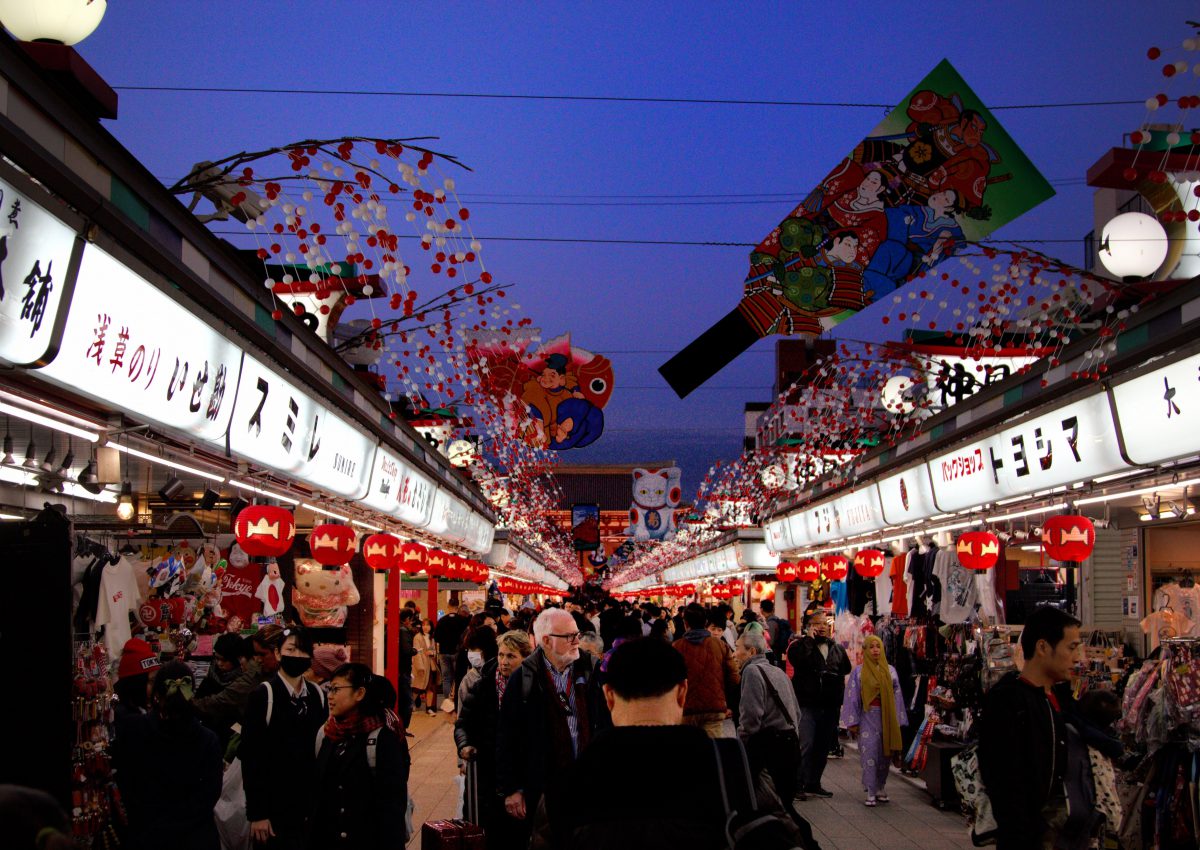
Japan Wonder Travel Tours in Asakusa
■Tokyo 1–Day Highlights Private Walking Tour (8 Hours)
Join our private walking tour to explore the highlights in Tokyo!
■Tokyo Food and Drink Tour @ Tsukiji and Asakusa
Enjoy unforgettable food and drink at Tsukiji, a lively fish market and the Asakusa area!
■Asakusa Local Food Bar Hopping Tour
Have an evening stroll in the traditional town, Asakusa with a knowledgeable guide and have fun drinking at local bars! Let’s have kamapi (cheers) together at Izakaya and try out Monjayaki (Tokyo style savory okonomiyaki).
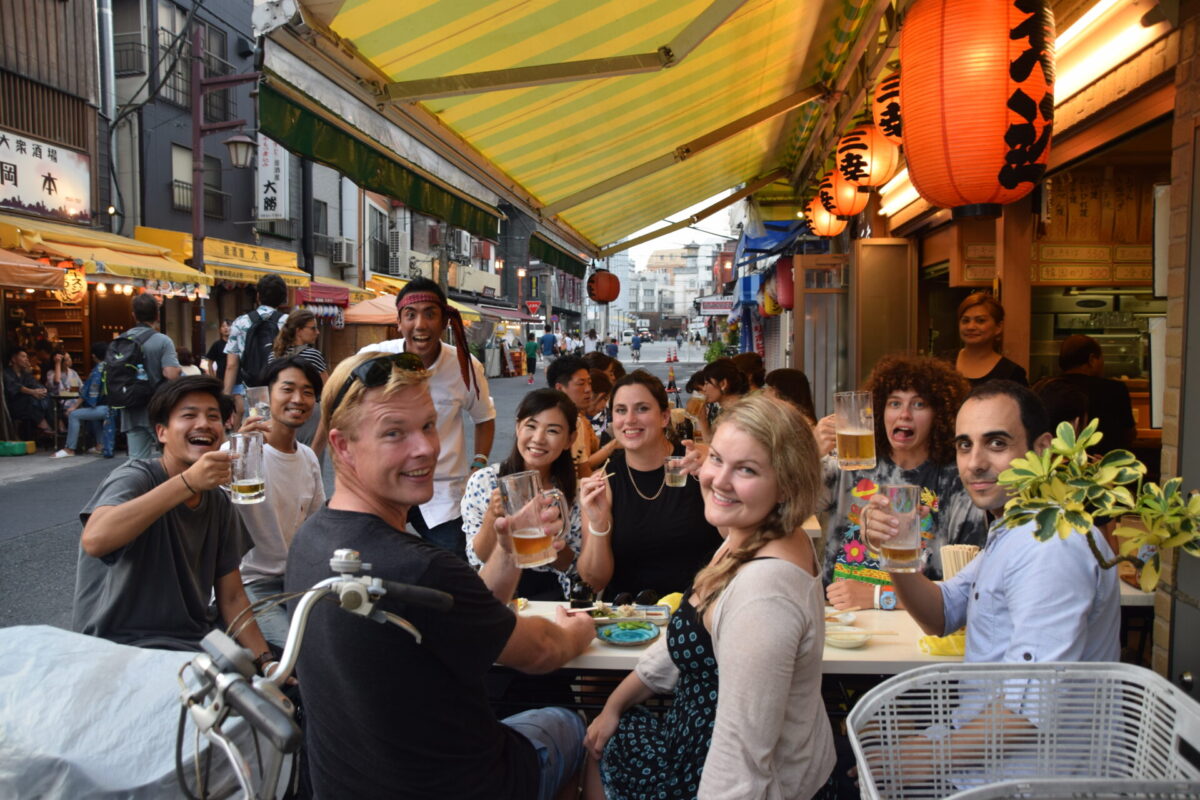
Although numerous people visit Sensoji all year round, only few of them understand the long history and secrets hidden in the symbolic structures. It is still worth a visit if you don’t have any background knowledge about the temple, but with a little understanding and interest in it you will be able to enjoy your time there much more!
Follow us on Instagram or Facebook for more travel inspiration. Or tag us to get featured!
Happy travelling!
Stay informed of the best travel tips to Japan, the most exciting things to do and see, and the top experiences to have with the Japan Wonder Travel Newsletter. Every week we will introduce you to our latest content.
Other articles you might like



